Quantifiable traits of Bryoria bicolor and its population decline
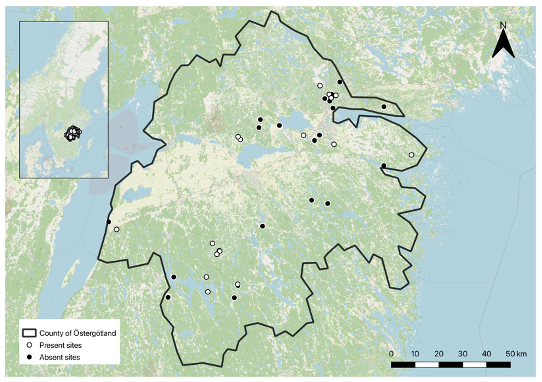
A strong decline of Bryoria bicolor, in the county of Östergötland, is apparent after revisiting all previously known sites. B. bicolor could only be found in 20 (~45%) out of 44 sites, while it had disappeared from 24 (~55%) of the sites
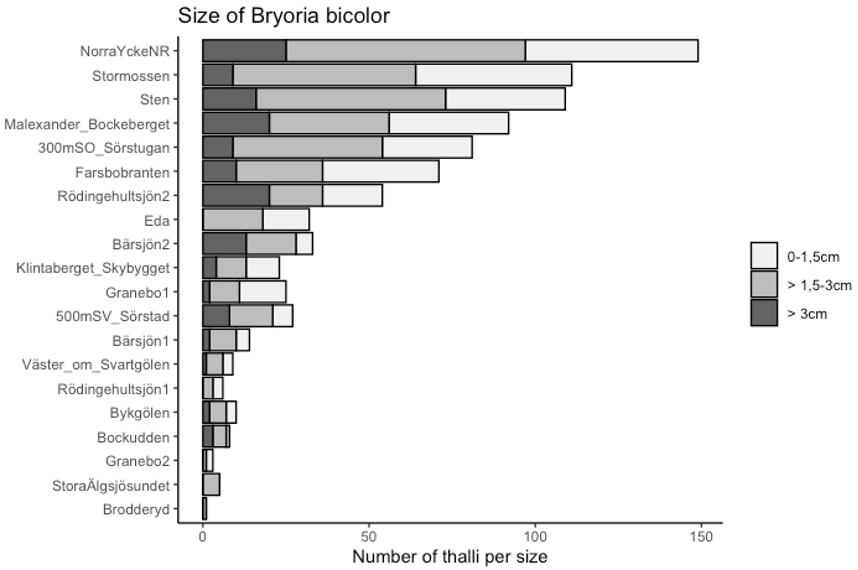
There was a large difference in abundance of Bryoria bicolor between sites. Three of the sites had larger populations with >100 thalli, while three sites had smaller populations with only 1-5 growing thalli. Differences in thalli size could also be seen between locations. All three size categories could be found at 15 sites (75%), while five locations only obtained one or two different size categories (25%). The middle size (>1,5-3 cm) was the most common and could be found at all sites. The smallest size category was found in 90% of the sites, while the largest size category was found in 75% of the sites
Importance of substrate variables at boulder level
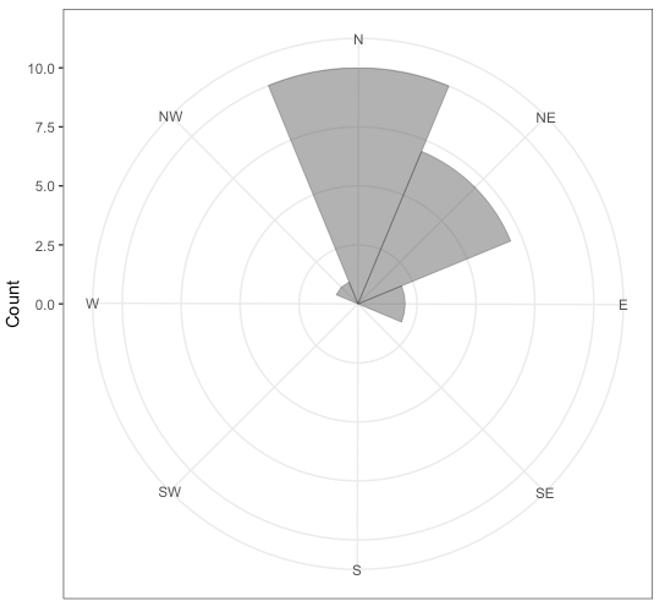
Bryoria bicolor showed a very restricted niche regarding its growing location on boulders. A total of 85% of the growing sites were on boulders facing northern and north-eastern directions. The lichen was growing in a northern direction at 10 sites (50%) and at north-eastern direction at seven sites (35%), an eastern direction at two sites (10%) and a north-western direction at one site (5%).
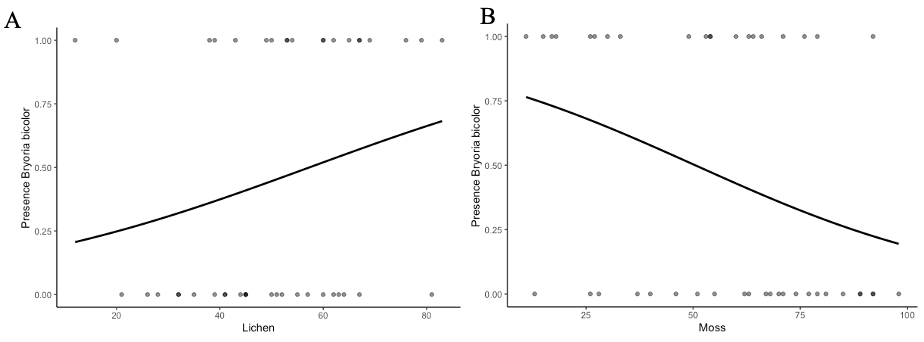
The composition of moss, lichen and bare surface showed a significant effect on Bryoria bicolor. The occurrence of Bryoria bicolor increased with a higher proportion of lichens (logistic regression, P < 0.05) and less proportion of moss (logistic regression, P < 0.05).
Importance of environmental variables at site level
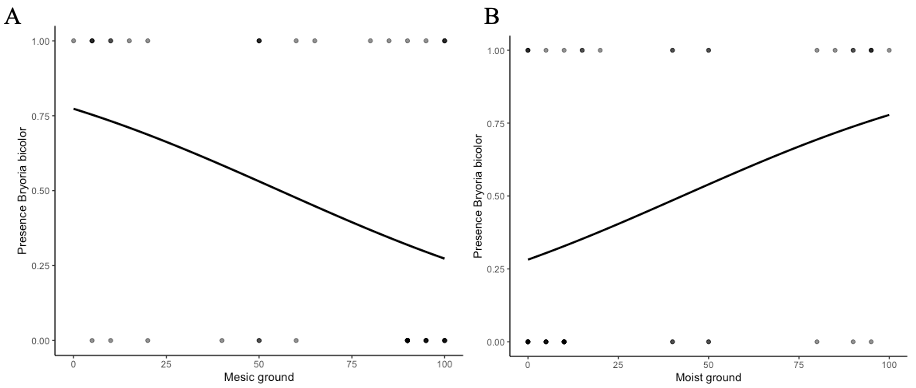
There was also a relationship between occurrence of Bryoria bicolor and humidity. Moist ground had a significantly positive effect on the lichen (logistic regression, P < 0.05) and mesic ground had a significantly negative effect on the lichen (logistic regression, P < 0.05).
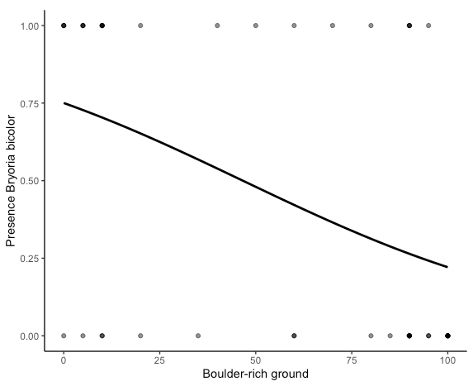
The proportion of boulder-rich ground showed a negative effect on the occurrence of Bryoria bicolor (logistic regression, P < 0.01).

Both larger tree diameters and a higher number of pine trees within 10 metres of the boulder did have a significantly negative effect on the occurrence of Bryoria bicolor (logistic regression, P < 0.05) (Fig. 15), which was not the case for deciduous- and spruce trees.